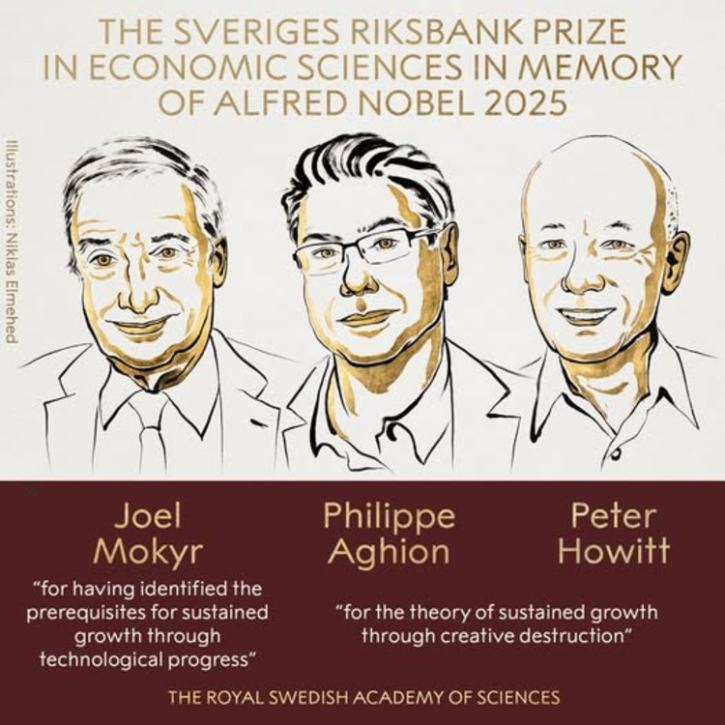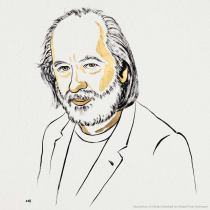
The Royal Swedish Academy of Sciences has awarded the 2025 Sveriges Riksbank Prize in Economic Sciences in Memory of Alfred Nobel to Joel Mokyr, Philippe Aghion, and Peter Howitt for having explained innovation-driven economic growth. One half of the prize goes to Joel Mokyr “for having identified the prerequisites for sustained growth through technological progress,” while the other half is jointly awarded to Philippe Aghion and Peter Howitt “for the theory of sustained growth through creative destruction.”
The laureates’ work provides a fundamental understanding of how new technology drives sustained economic growth. Over the last two centuries, humanity has witnessed a period of continuous economic expansion unprecedented in history, lifting billions out of poverty and forming the foundation of modern prosperity. This year’s Nobel Prize in Economic Sciences recognizes the scholars who have explained how innovation serves as the driving force behind this progress.
Technological advancement, with its constant replacement of old products and production methods by new ones, lies at the core of economic growth. This perpetual cycle leads to improvements in living standards, health, and overall quality of life. Yet, this was not always the case. For most of human history, economic stagnation prevailed. Even though major discoveries occasionally brought temporary improvements, growth consistently plateaued over time.
Joel Mokyr’s research used historical evidence to uncover why sustained growth became possible. He demonstrated that technological progress requires not only practical know-how but also scientific understanding of why innovations work. Before the industrial revolution, this critical foundation was missing, hindering the cumulative development of new technologies. Mokyr also underscored the importance of societies that embrace openness, curiosity, and adaptability to change.
Philippe Aghion and Peter Howitt focused on the mechanisms behind sustained economic expansion. In their landmark 1992 paper, they developed a mathematical model of creative destruction—the process by which new, superior products and technologies replace outdated ones, driving productivity and growth. While innovation is inherently creative, it is also destructive, as older firms and technologies become obsolete.
The laureates collectively reveal how this cycle of creative destruction generates both progress and conflict. Without careful management, resistance from established industries and vested interests can hinder innovation. Their groundbreaking insights offer a profound understanding of how economies evolve, emphasizing the delicate balance between fostering new ideas and managing the disruptions they bring.





